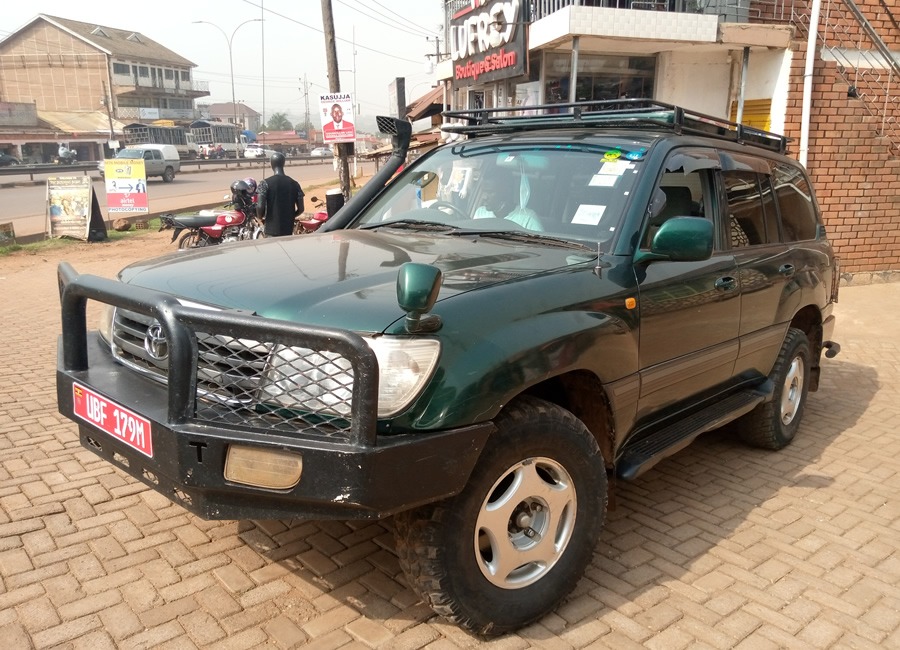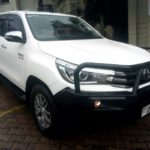Whether you’re a teenager getting ready for your first car or an adult who’s always relied on public transportation, understanding the basics of automobiles can seem overwhelming. Uganda Car Rental Services will walk you through everything you need to know about cars, from how they work to how to maintain them.
How Cars Work: The Basics
At its core, a car is a machine that converts fuel into motion. The heart of this process is the internal combustion engine, which burns gasoline (or diesel) to create small explosions that push pistons up and down. These pistons turn a crankshaft, which ultimately turns the wheels through a series of gears and axles.
The primary components that enable this to happen include the engine, transmission, differential, and wheels. The transmission functions like a bicycle’s gear system, enabling the engine to operate efficiently at various speeds. The differential splits the power between the left and right wheels, allowing them to turn at different speeds when cornering.
Types of Cars
Understanding different vehicle categories helps you choose the right car for your needs:
 Sedans are traditional four-door cars with separate trunk compartments. They offer good fuel economy and comfort for daily commuting. Hatchbacks are similar but have a rear door that opens upward, providing more cargo flexibility. SUVs (Sport Utility Vehicles) sit higher off the ground and offer more interior space and cargo capacity, making them popular for families.
Sedans are traditional four-door cars with separate trunk compartments. They offer good fuel economy and comfort for daily commuting. Hatchbacks are similar but have a rear door that opens upward, providing more cargo flexibility. SUVs (Sport Utility Vehicles) sit higher off the ground and offer more interior space and cargo capacity, making them popular for families.
Coupes are two-door cars that prioritize style and performance over practicality. Convertibles feature retractable roofs for open-air driving. Pickup trucks combine passenger seating with an open cargo bed, ideal for hauling materials or equipment.
Electric vehicles (EVs) use battery-powered electric motors instead of gasoline engines, offering zero local emissions and lower operating costs. Hybrid vehicles combine gasoline engines with electric motors for improved fuel efficiency.
Essential Car Components
 The engine is your car’s powerhouse, typically located under the hood. Modern cars usually have four, six, or eight cylinders. More cylinders generally mean more power but also higher fuel consumption.
The engine is your car’s powerhouse, typically located under the hood. Modern cars usually have four, six, or eight cylinders. More cylinders generally mean more power but also higher fuel consumption.
The transmission can be either automatic or manual. Automatic transmissions shift gears for you, while manual transmissions require you to operate a clutch pedal and gear shifter. Most beginners find automatic transmissions easier to learn.
Brakes use friction to slow and stop your vehicle. Most modern cars have disc brakes on the front wheels and either disc or drum brakes on the rear. The brake system includes brake pads, rotors, brake fluid, and various safety features like anti-lock braking systems (ABS).
The suspension system includes springs, shock absorbers, and struts that smooth out road bumps and help maintain tire contact with the road. Good suspension improves both comfort and safety.
Tires are your only contact with the road, making them crucial for safety. They need proper air pressure, adequate tread depth, and should be rotated regularly to ensure even wear.
Basic Maintenance Every Car Owner Should Know
Regular maintenance keeps your car running safely and efficiently while preventing expensive repairs. Oil changes are the most critical maintenance task, typically needed every 3,000 to 7,500 miles depending on your car and oil type. Engine oil lubricates moving parts and helps regulate temperature.
 Tire maintenance involves checking air pressure monthly, inspecting tread depth, and rotating tires every 5,000 to 8,000 miles. Under-inflated tires reduce fuel economy and can be dangerous, while worn tires lose grip in wet conditions.
Tire maintenance involves checking air pressure monthly, inspecting tread depth, and rotating tires every 5,000 to 8,000 miles. Under-inflated tires reduce fuel economy and can be dangerous, while worn tires lose grip in wet conditions.
Fluid levels should be checked regularly. Besides engine oil, your car needs brake fluid, transmission fluid, coolant, and windshield washer fluid. Low levels can indicate leaks or normal consumption that needs attention.
Battery maintenance involves keeping terminals clean and checking the battery’s age. Most car batteries last three to five years. Signs of a failing battery include slow engine cranking and dim headlights.
Air filter replacement is simple but important. A clean air filter helps your engine breathe properly, improving performance and fuel economy. Most air filters need replacement every 12,000 to 15,000 miles.
Understanding Car Insurance
Car insurance is legally required in most places and protects you financially in case of accidents. Liability insurance covers damage you cause to other people and their property. Collision coverage pays for damage to your own car in accidents, while comprehensive insurance protects against theft, vandalism, and natural disasters.
Your insurance premium depends on factors like your age, driving record, location, and the type of car you drive. Sports cars and luxury vehicles typically cost more to insure than economy cars.
Buying Your First Car
 When shopping for your first car, consider your budget, needs, and lifestyle. New cars come with warranties and the latest safety features but depreciate quickly. Used cars offer better value but require more careful inspection for potential problems.
When shopping for your first car, consider your budget, needs, and lifestyle. New cars come with warranties and the latest safety features but depreciate quickly. Used cars offer better value but require more careful inspection for potential problems.
Research reliability ratings, typical repair costs, and fuel economy for any car you’re considering. Get a pre-purchase inspection from a qualified mechanic for used cars, and always take a test drive in various conditions.
Consider the total cost of ownership, including insurance, fuel, maintenance, and repairs. A cheaper car might cost more in the long run if it’s unreliable or gets poor fuel economy.
Safety Features and Driving Tips
Modern cars include numerous safety features designed to protect you. Airbags deploy in crashes to cushion occupants, while seatbelts remain your primary protection. Anti-lock braking systems (ABS) prevent wheel lockup during hard braking, allowing you to maintain steering control.
Electronic stability control helps prevent skids and rollovers by automatically applying brakes to individual wheels. Many newer cars include automatic emergency braking, blind spot monitoring, and lane departure warnings.
Good driving habits are just as important as safety features. Maintain a safe following distance, avoid distractions like mobile phones, and adjust your driving for weather conditions. Regular vehicle maintenance also contributes to safety by ensuring brakes, tires, and other critical systems work properly.
Fuel Economy and Environmental Impact
 Understanding fuel economy helps you save money and reduce environmental impact. Miles per gallon (MPG) ratings indicate how far your car can travel on one gallon of fuel. City driving typically yields lower MPG than highway driving due to frequent stops and starts.
Understanding fuel economy helps you save money and reduce environmental impact. Miles per gallon (MPG) ratings indicate how far your car can travel on one gallon of fuel. City driving typically yields lower MPG than highway driving due to frequent stops and starts.
Factors affecting fuel economy include driving habits, vehicle maintenance, tire pressure, and weather conditions. Gentle acceleration, maintaining steady speeds, and combining errands into single trips can significantly improve fuel efficiency.
Alternative fuel vehicles like hybrids, plug-in hybrids, and fully electric cars offer reduced emissions and potentially lower operating costs. However, they may have higher upfront costs and require consideration of charging infrastructure for electric vehicles.
Common Problems and Solutions
 Every car owner encounters common issues. Dead batteries are often caused by leaving lights on or extreme temperatures. Flat tires can result from punctures, worn tread, or low air pressure. Learning to jump-start a battery and change a tire are valuable skills.
Every car owner encounters common issues. Dead batteries are often caused by leaving lights on or extreme temperatures. Flat tires can result from punctures, worn tread, or low air pressure. Learning to jump-start a battery and change a tire are valuable skills.
Engine overheating can occur due to low coolant, a faulty thermostat, or a damaged radiator. If your temperature gauge shows overheating, pull over safely and turn off the engine immediately.
Strange noises often indicate mechanical problems. Squealing brakes might need new pads, while grinding sounds could indicate more serious issues. When in doubt, consult a qualified mechanic rather than ignoring potential problems.
Getting Started
Learning about cars takes time, but start with the basics covered in this guide. Find a reputable mechanic you trust, read your owner’s manual, and don’t be afraid to ask questions. Many auto parts stores offer free services like battery testing and code reading for check engine lights.
Consider taking a basic automotive maintenance class at a community college or adult education center. Understanding your car better will make you a more confident driver and help you make informed decisions about maintenance and repairs.
Remember that cars are complex machines, but with basic knowledge and regular maintenance, they can provide years of reliable transportation. Start with simple tasks like checking fluid levels and tire pressure, and gradually build your automotive knowledge and skills.
Planning to visit Uganda and require a rental car for a business trip, safari or special occasion like wedding, we at Uganda Car Rental Services will be more than happy to offer you our services. Whether you want a 4×4 car, sedan, minivan, bus or luxury vehicle- we got you covered with amazing rates guaranteed to suit your budget and travel needs. Contact us now by emailing to info@ugandacarrentalservices.com or calling +256-700135510 to speak with the reservations team.










Related Articles
Why Choose a 4×4 Car Rental in Uganda for Your Safari Trip
Cheap Car Rental Uganda: Save Money Not Sacrificing Quality
Bwindi Park Ranks Third Best Adventure Destination Globally